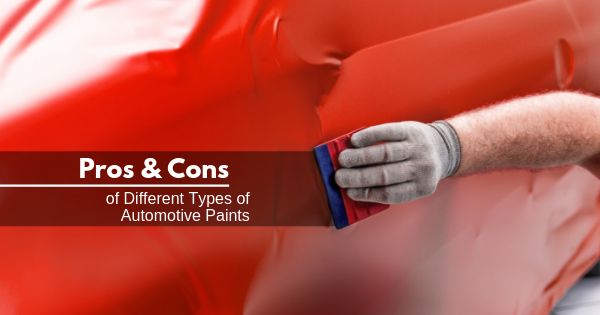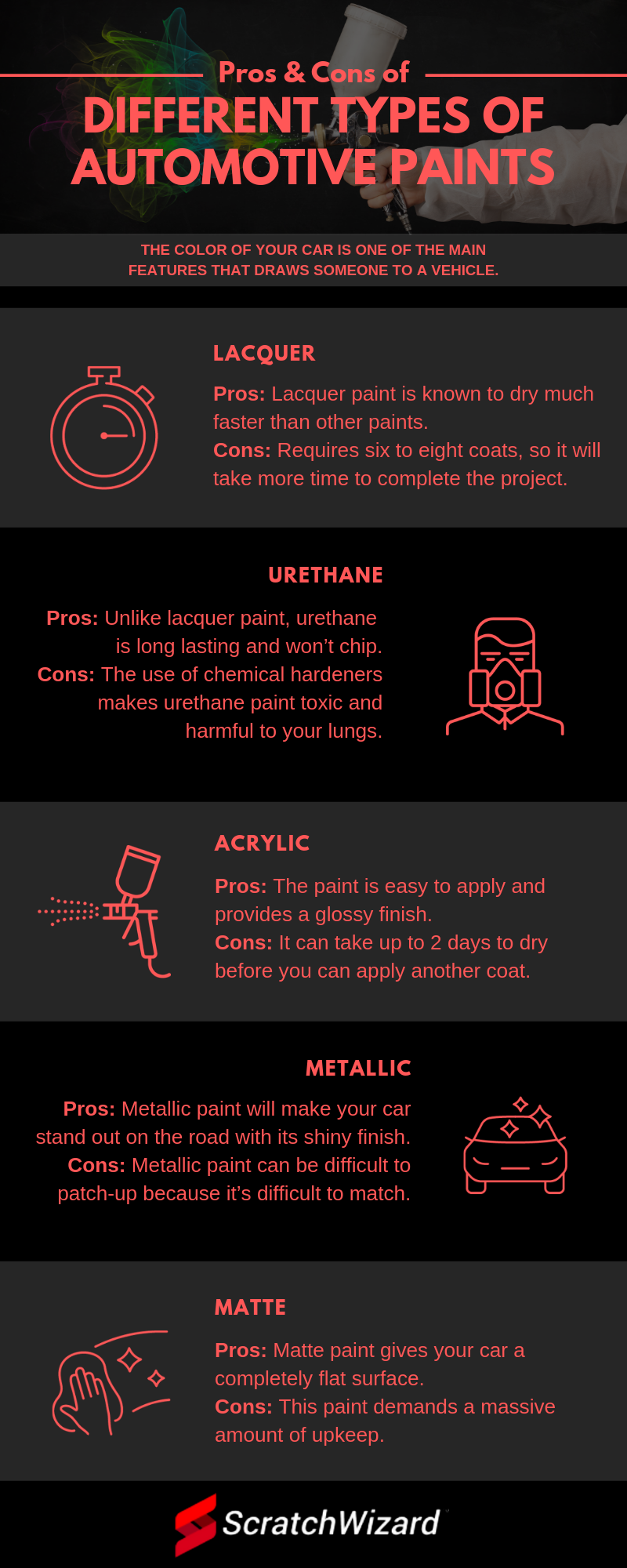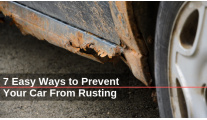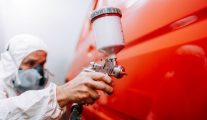
There are many ways to customize your car and make it your own, from additions to changing the color. The color of your car is one of the main features that draws someone to a vehicle. While Birchwood Credit Solutions says red and blue are the most popular bright colors in the world, you can choose any paint color and type you want. Besides painting your car just because you want to, there are other instances where you might want to change things up, such as recent damage like a scratch or dent. This requires you to match up the paint color or repaint it entirely. Either way, you need to be aware of the pros and cons of the different types of automotive paints on the market to properly care for your car.
Lacquer
Lacquer paint is typically used for several different types of hard and shiny finishes on wood and furniture, but the paint was extremely popular for cars from the 1920s to the 1960s.
Pros: If you’re looking for a good shine on your car, lacquer remains one of the best paints to achieve it. Waiting for your car to dry is a tedious prospect, though, especially if you don’t have a garage to avoid damage from the elements. Lacquer paint is known to dry much faster than other paints.
Lacquer is widely considered as the cheapest and easiest to apply as well. With colder months that are often harsh on your car, sometimes a paint job may be necessary to combat the rough weather and avoid rust. While most paint shouldn’t be applied in colder weather, lacquer can be applied in temperatures of 65 degrees.
Cons: While there are some upsides to lacquer, there are also negatives, which is why the paint isn’t common anymore. While the paint may dry faster, lacquer paint requires six to eight coats, so it will take more time to complete the project. Lacquer paint also needs to sit for a few weeks and then be polished. Any trim removed for painting cannot be put back until the car is polished either.
Lacquer paint is also commonly spray painted on, as opposed to painted on directly, so you would need to invest in a paint sprayer. Another main reason why lacquer isn’t used as much today is because the paint isn’t durable. If you don’t have access to a garage, then a car with lacquer paint can get chipped away from the sun’s exposure. While easy to put on, it requires a lot of maintenance.
Urethane
Urethane paint is one of the most popular types of automotive paint used by manufacturers and professionals. Besides the body, urethane paint is also applied on engine parts that tend to get hot.
Pros: Unlike lacquer paint, urethane is long lasting and won’t chip. A car with urethane paint doesn’t need to be stored in a garage to remain protected from the sun, rocks, salt, and other outdoor elements. Urethane can also give your car a similar finish as lacquer paint and make your car look great. Urethane can also be sprayed over other paints if you need to a new paint job. Urethane paint also dries quickly with the use of chemical hardeners.
Cons: While quick drying is a benefit, the use of chemical hardeners makes urethane paint toxic and harmful to your lungs. This means you’ll have to wear the proper protective equipment, including goggles, an air respirator mask, a painter’ suit, and pants. If you’re new to car painting, urethane is more difficult to apply as well. Getting your car painted with Urethane may require you to get it done by a professional, which will cost more than doing it yourself.
Acrylic
Acrylic paint is another popular option you can use to give your car a new finish. Acrylic paint has several similarities to urethane paint. There are different types of acrylic paint, which includes enamel, lacquer, and urethane.
Pros: Acrylic is water based, so unlike urethane paint, it’s less toxic. The paint is also easy to apply and provides a glossy finish. Acrylic is also considered to be a long lasting and inexpensive paint, even though it was popular in the 1950s to 1980s for expensive cars. As acrylic lacquer dries, it catches less dirt and dust than other paints.
Cons: One of the major downsides to acrylic paint is it can take up to 2 days to dry before you can apply another coat. Acrylic lacquer also doesn’t last long and can fade easily if it’s left out in the sun, so make sure you have access to a garage if you plan on using acrylic paint.
Metallic
Another type of automotive paint is metallic. This paint is typically used on muscle or sports cars to give it an extremely glossy look.
Pros: Metallic paint will make your car stand out on the road with its shiny finish. Cars with metallic paint can also hide minor surface blemishes because of how reflective the metallic paint is. Metallic paint jobs can also be sold at a high resale value because it’s considered to be a high-end paint.
Cons: If you find yourself in a situation where you need to repair a severe door ding or scratch, metallic paint can be difficult to patch-up because it’s difficult to match. There are also fewer colors to choose from, and the paint is more expensive than regular paint.
Matte
A matte finish is another way to make a statement with your car, and the trend continues to increase in popularity today. Matte jobs can typically be found on luxury brand cars like BMW and Mercedes Benz.
Pros: Matte paint doesn’t offer a glossy finish, and instead gives your car a completely flat surface. This is an especially desirable look today. Matte paint will keep your car looking smooth on the road and will look good in any weather condition.
Cons: This paint demands a massive amount of upkeep. Scratches tend to stand out more because it’s not glossy, so a Mercedes Benz touch-up paint kit will only do so much to fix damage to the finish. Matte paint can also be difficult to clean and limits what you can use, as some methods may interact with the paint. Matte finishes are also expensive like metallics.




